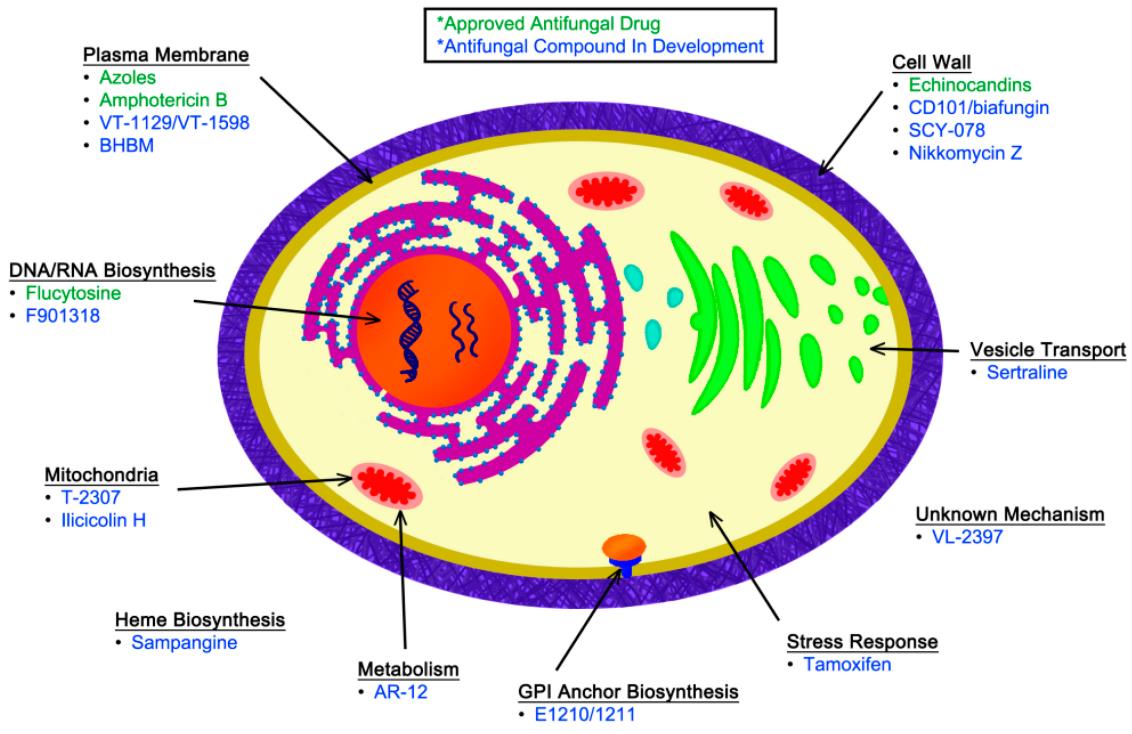Empowered by leading technologies as well as years of experience in drug discovery, Creative Biolabs provides our clients with a series of antifungal drug discovery services. Here is an introduction about ergosterol biosynthesis which can be potential targets for antifungal drug discovery.
Why Need Antifungal Drug Discovery?
Fungal infections represent a serious and currently unresolved health problem, especially in industrialized countries. In addition, emerging resistance to commercially available antifungals has been reported. Treatment, especially of systemic infections, is accompanied not only by intermediate success rates but also high costs. Due to the eukaryotic nature of fungal pathogens, well-tolerated antifungals are identified much less frequently than antibiotics targeting bacteria. Commonly used classes of antifungal compounds include azoles, polyenes, and echinocandins. Due to emerging resistance to standard therapies, significant side effects, and high costs for several antifungals, there is a need for new antifungals in the clinic.
 Fig.1 This diagram of a fungal cell indicates the sites of action for currently approved antifungal drugs (green) as well as other agents in various stages of development (blue).1
Fig.1 This diagram of a fungal cell indicates the sites of action for currently approved antifungal drugs (green) as well as other agents in various stages of development (blue).1
Ergosterol Biosynthesis as Antifungal Drug Targets
Ergosterol is an important constituent of fungal membrane lipid. It is most abundant in the fungal plasma membrane and essential for cell survival due to its biological function in numerous cellular processes including cell membrane fluidity, permeability, and pheromone signaling. Providing an essential component of the fungal cell, the ergosterol biosynthetic pathway in Saccharomyces cerevisiae has been well documented. Several pathway enzymes, including Erg6, Erg2, Erg3, and Erg4, are dispensable, while others (e.g. Erg9, Erg1, Erg7, Erg11, and Erg24) are essential for fungal viability.
Since ergosterol is a fungal-specific sterol, the ergosterol biosynthesis pathway has been investigated intensively as a target of antifungal drugs. The most frequently used antifungal compounds in the clinic and in agriculture are the azoles, which inhibit the cytochrome P450 lanosterol 14a-demethylase in the ergosterol biosynthetic pathway. However, many pathogenic fungi have developed resistance towards azoles because these antifungal compounds have been used widely since the 1970s. Drug resistance intensifies the need for the identification of new drug targets and the development of novel drugs. Although several classes of drugs (such as the azoles, allylamines, morpholines, and polyenes) targeting the ergosterol pathway have been commercialized, the pathway still remains a potential source of novel drug targets.
Features of Our Services
-
Highly efficient
-
One-stop pipeline
-
Skillful scientific team
-
Customized service
With the help of our well-established technologies and experienced scientists, Creative Biolabs offers antifungal drug discovery services with a new mechanism of action different from those currently in use. We provide very flexible options for each specific case. We are happy to make it accessible to all kinds of research and industrial customers. Please do not hesitate to contact us for more information.
Reference
-
Pianalto, K M.; et al. New horizons in antifungal therapy. J Fungi (Basel). 2016, 2:2(4). Distributed under Open Access license CC BY 4.0, without modification.
For Research Use Only.


 Fig.1 This diagram of a fungal cell indicates the sites of action for currently approved antifungal drugs (green) as well as other agents in various stages of development (blue).1
Fig.1 This diagram of a fungal cell indicates the sites of action for currently approved antifungal drugs (green) as well as other agents in various stages of development (blue).1


